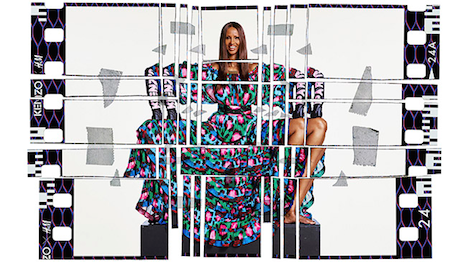Instagram remains one of the most fertile grounds for brand engagement, but navigating algorithmic changes in its news feed will be one of their primary challenges in the new year, according to a new report from L2.
L2’s fourth annual Intelligence Report: Social Platforms 2017 accounts for the evolution of scope, strategy and monetization for major social media platforms, focusing on Facebook, Instagram, Snapchat, Twitter and YouTube, and, to a lesser extent, Pinterest and Chinese messaging platform WeChat. The report essentially stands as a recap of brand efforts on multiple platforms over the past year, with clear winners emerging in H&M, American Eagle and Absolut Vodka.
“Asking how brands can respond to the algorithmic changes that Instagram and Facebook have made to news feeds is the equivalent of asking, ‘What do you do when Google changes its SEO algorithm?’ You adopt and adjust your focus accordingly,” said Evan Neufeld, vice president of intelligence at
L2. “I think brands continue to wish that social media will slow down, stay stable, and not change.
“However, the fact is that it is changing all the time,” he said. “The good news is that all of these changes benefit advertisers; changes in algorithms and API’s make it easier for advertises to spend money to effectively reach audiences.
“The downside is that it is harder and harder to win organically on social media and more about working the paid options—specifically what we are seeing happen with the news feeds on Facebook.”
Social platforms
The L2 report evaluates the digital strategy and performance of 427 consumer brands with active social media strategies across nine industry verticals including Activewear, Auto, Beauty, Beverages, Consumer Electronics, CPG, Fashion, Retail, Watches and Jewelry.
The report also accounts for the maneuvers individual platforms were making, noting that Pinterest, while traditionally emphasizing social commerce, recently launched retargeted advertising. Twitter has gone in another direction, following Facebook and Instagram in framing itself as a platform for video advertising.
Snapchat was named the “gold standard for rapid ad innovation last year,” and the report made mention of its six new creative formats for brands, and the launch of its first API. Brands flocked to Snapchat last year, despite struggles with content creation that bends to the unique demands of the platform.
And Instagram’s widely publicized aping of the Snapchat user experience has actually paid dividends, mostly due to scale: Nike’s most watched Snapchat video garnered 66,000 views, its very first Instagram Story accrued 800,000 in its first 24 hours.
Instagram’s change in its Newsfeed algorithm to mirror parent company Facebook’s was a big focus, and L2 noted that the change correlated with a marked decrease in organic reach on the platform.
China was also another focus of the Social Platforms report, mostly by way of making contrasts between Chinese and American brand and consumer behaviors. The report noted that messaging from and with brands is much more warmly received in China than in America, with homegrown WeChat leading the way.
“There’s a big difference in the way Asian and APAC consumers respond to celebrity brand endorsements than US consumers do,” Mr. Neufeld said. “Historically within Asian countries, there has been a focus on brands corresponding to lifestyle and affluence.
“Therefore, the practice of celebrities endorsing brands is widely accepted and embraced,” he said. “This is evident when Hollywood movie stars make a fortune doing sake ads in Japan.”
“What’s interesting is that celebrity endorsements of brands have also been traditionally important in the US—however, the Internet has brought an era where everything is driven by price and convenience. Brands are losing more and more market share and consumers think less of brands than they do product types, and I think that you will continue to see that distinction diverge, brands having more impact in non-US markets than in US markets.”
The report also waxes on the quandary of localization for brands on social media, which, while an honest endeavor, requires a significant amount of creative and financial investment. L2 mentions Dove, Garnier and Pantene as brands who have successfully fractured their social media presences into localized chunks.
Winners and losers
L2 listed a number of winners and losers on each platform, segmenting its focus to different strategies within each platform. For example, the report noted H&M’s adroit use of mobile-optimized video to announce its H&M x Kenzo collection on YouTube and Snapchat, using the latter’s Discover ads and sponsored lenses to court millennials.
The report also praised American Eagle’s repositioning through it’s #WeAllCan campaign, which aimed to attract older millennials instead of its tried-and-true exchanges with the teen market. It did so through adept use of Facebook Canvas video ads, a presence Vice Media and Refinery29’s Snapchat Discover channels, and celebrity influencer relationships on Instagram.
“It’s a secret sauce as to why one social media campaign is a success and the other is a failure when they are using equal components of celebrity endorsement A versus celebrity endorsement B,” Mr. Neufeld said. “As people become more and more jaded towards celebrity endorsements (especially in the US markets), success is dependent on whether or not the social media campaign is viewed as being authentic.
“That is a hard thing to measure as some celebrities are viewed as more authentic and others as more commercial. In this case, success is based on the particular nature of the post, the context of the post and the relationship that particular celebrity has with their fans as being viewed as more or less authentic.”
All of this is a mere sampling of the findings within L2’s report, which can be partially accessed
here.
{"ct":"+MuDWYhvjf57EIavSbjjT56H\/UkR2E6Gw8Qa5aRDznMpiZTYEyvqfuP0d0tJ\/rcgu4KkP+da5xPfwBoSMMRa8GGcu2k6G5yrZT1jNz\/12tNbzpACu6+2u9U1g4TtEZ5rRIbrL+2qYoCE0JTJzGDilm60fMpRNBa4jQ+2hST3bvU+F5yw0EEb6zNuHzusy8X40M5JZ2IRvTinRfDxtanJNMiIZXDRCl4arehluRGns0+IIaXZzyBVk3u3U5CHam3WA\/IWuqV18YQDMbpB3qFJJTKeV1cgkp5HMcdEXnHoXV+5+m+eTCJcg4jYNKvA2+RzEDC1aKRxA36Dwm61edsTbUpMM2pdCjIDB3fYZFDW+EeiV1\/ggBZQhF1sxpoU5Lv\/nBDeI5fF\/74luFEo\/DxiHrxEMjTNxhGNIdC83kk24Mu3wuhoE\/g8jjeDJSUucMIt4zvZjSd+vhQ+Gb5O3BxJsCr9O6UXaxrQGP8t4berJS8oBRle9AZFzbamOa5YH7VAJ9CyMDx9AZqZlimg0JDN\/hB+YRUBGwiItrv5r+qnwSsHLs+s6MheInpY9I04Febv2yorORnpHDbrhvvhYIp57uIAYatWYOLubja0wzw2c6fabg0HlgUIaQjgod7hZ6Z0IqTNRFNZZdWfXw+3DK9ohgOtfNwS6v9Xa0V1au2qb3RLcGgv79H5InY+NJPMatVqF\/e7JPkuB2F5ZjOc\/rIw49j37t93cKCrHBjuMOKhrJffkLIqLzkyoy+1BeMIX7gZwFbdjWWd6USLan6IVE7fO9yK80UgO+A42jPHLjA1rkpvsd5lB8OaySGign2EJsTvzRzqSHCYi5jzfEMEBdIFpnOtj6WKyzvMITSnAgK\/KhgU5hQ7bLZDKum6JsHn8r+vYvsTcLiN60Uv6M6nJe8jygs00L6fRlQ9mEf74\/FMRU+aYI29aOGqrapAdxYQNf0yukf9ODk27OfoeYBvfD6jaC7nOmqupAeu\/pPNVJpO17CRJZcEq6HPe5kaEYfnhR4\/Tfhd8fjRXIS8sIs5ad23AV9TeBxvumlADoPTHABHhuG4wCPXEZGPtLcO1D5bMN74d0oIM6WKejCCtuK\/G4KDyw3zlPdk1XtMGl0PWuGm2q0C6DjFZY6p2Q8cNt298dM8+pL50JJlpAgAxF\/C7T9vpMfaYkCUo6q1b7R3oyjev89Sudx460x41CP7RFMrru9LlgDaXL4MMYC0\/HeUhUc7cWPCE4cyxrzgBsHGeoAhYM7l7NY82wfAYcF9bR23k4R9LlEgA7oIY4qQTMxd3DxMkoHHegome15gZ\/PB9Hw9rGg\/0cjZXOYG\/D2CA2jR6a6ycJI7azqaB7Ucrsamh1wXPFRkowMhErb8BxLn0Xow3RmyOe2eJBv6CLoFuxc\/g9\/kbtqKvg9wnCuXtYpLscgPwSDoJTD6Ys7\/i77\/9y20fo2pUZMqNhwFZeqmuc39Zl3SsHmBIk9Xcz7\/d7t72fOw15+mR6IsHW1wiRIVhj3XzZqxldEF\/qWvgpjzqmOhtMMPnhK9EE5IGEkTfH+tTAmIA5K9HnWTpqXpPSKGX5a3RCf6w7EORckcAHL6pltIJtCZwUAnTddmV0AHefM813Ia1D5pJlOKBakFCrIiJAZIZzEiErO+lS7IB8eCxbC0yLTU7wv+0iosAzeQBDDqQHwU6UlS6KvK1o9Kd523pyZufSCFiBQ7iUozzXhnE7gZt5hibtBguoQlTD74uxyQRvlcgUnwDCSg\/J4TPm1U0qOuSWyYWcCfkGRzlqTC39g7j5zaaWEbgaFJzgUp9M5QFAzDFsKuys0sGBjB\/7G4zjsvqxeEU49ASK5BhC0OByO62utdCfe5X8SP8b0lijX8fxcXxikt9mUs2pBfAcUIfHgAJzMEkM44Hw79Zjr69nPL4HS2gJxjnNGz5TcuOJtLVOHRgRK0Cxf54HkNJ4IYbbet8G\/tEZC3nn3QnqsFhOtNCducgC9t\/6k9iv637vYxxjJIgDdmL17yEWQ25+kjeczT\/M7aM0C6oUtQeDu8CP6pc\/HkjjUYI7FUfIQniIRhhCxjiFj0qOrETiAVj1+LosUigitx3dQ6HyLFV9Zo\/Dr6XcznTn92Yy8wrhBQEONcjohIf2SYhXys48rc7N4SxcdQUpc622f2Cd9GGuvMUAsI3kyp6XqJTYLoAD189okLpZkPsm\/YCpnSZKrIkVPN2Bpy96brmvZ0x+8nE4fDVX4ijyPgpJ9cOHd2XmeVr14ciYdLXoxWfxL8vrQR2ZaV6m4BwMsfDyYxpmoCMxeMYspvUwABm9Ml2o\/YFZ2Apemoclhfe71HAzrCKRHmOlgdzeELq3Dl\/wRNNKyuHULP9YY08tmW9M5P65169enJX5ChpFqYa3fOAlgR7k6hCSs7y\/SoOwj7UgYrcGE1bu0u3ud81lJX2XdmI7citltVYBAOrISZ2irEgyj2pgs3yPYc61Zmnve\/A5s\/v4oxrv78wGOfRsMzP0kdcx3Ea29d5MNaNh1PgK0qvl+\/Kz+ISIRPOU+0IWnwPlZG97QmR0wgB9Z\/ESpTafwYF4p1VFGE5E4jAvndUNtNL0p17WRAuC1f4kJ+qDa0fUMZUp2uDcoazOYzp5M7fQRWlu\/CO+Hc2JoW6XWEZSsPJDCpsTH1KTqXLlNlhxdLKp2qB1XGuYYSTPASB\/5+zbNQRM0qHeoznRvC8+xOOMEyBlDMiZRHFg8Im2HDitz8xWjxLUWbt4MHHHlSo93UadKxgU3qTr1\/mcK+mQts4gt7q7Lf3xG5T5YuIP2RkUUvnpw11iPUjQZlNfF+gbh82\/pIViFKpaQncmi+T8qEMdOhFGzt3oXsZnw+Y+Xm0b5LmEy\/MhOIfQVZXljOEc3TDy7FDGqOynIDkBZ7FhCVSqp2jMmnLyAISrDpE2AuiQUEKcpvIXjjBHwD32uR5zPzuQXXK8naHM0Vk0FDTgHZbK\/UpNrqwWyg6RO6Q5\/p+6jqnv8\/nqd+zYLM6oMDUCrj23WtII+qg0qz4EYOp4ESyVDpSWOwYjXXZUvO+RLhFWV8ojtz6Yfje7zXsJ4PBpruRrBsjYZPFYzJ7lgPr0wWs3CLCFIttcooFPLGXHDoOT\/ZYWFZO6EnZB9arorRK0LGPNuJrPTtTy8725it+99nizhdU9E8V7uIOsaC+UeUmddbQcTxGtmmKRWfDu3WfySFS8cqMbPWbXdUV7rZ\/oyGO2UQo07PFi1k54cQ56spCK3g48CLhvOaL1jvStN9KfACYqtFEm3OTRbTNLhz+YX1kCqUv64cqI29Oszy7ONUS2JYTBgADvVWuiLRBgHDPFIK1NKGHoKhlS3GPu5ckpVIxB+O1Wm8WmV5MnxJCGytlhyRh1gyVMnQfFS6mNrqnF2UWcipujyMQ1uQ7uhZMRr5uzhwELbnTMPF1WZ69U7dj+KGChDM1eFEUPpOPuFbMnSHCf\/pkEMR1wIj3CHkwSxNpaCbltVYpz2xNCdUXpUOgrKfVbEvy2E4Tou4pmdz0rNnnir7c9SQPNBnUcVcLczEqyUIJwIEeOsIvsrw+NE7BmtpxsOeWsVMqD\/U+fRdq+Ru9Stux1RG214PMXXy7i5ZI6qpL4sb4yPiegwvK9AySRhr\/ZRlZqAsufwRy2gQG2XBO8DWLMzGiB+pYiLavCNXqR+wR\/OJkbYicz+rOLohT+cDgnYAJQ\/DAo5eoa2EJ+AgMLw33EIMEIQ40IGyxbJRzvbsyP+IHPqLLB6aSdAfRGcJR1mI+ynGTmV9vcyxdhwPaWk2ilIFT2lU8l\/+4G+atEh\/O1maEVDz33m0Q6lMwMSX4iMRG0aL\/D0h7zHyxbmTZ5iBQeRJauNLRyq7npRY6FvsSRm8R6aU9yzLpxkjKxKkNLt1bdBZmz678GtR9ow0zvwXm8bChZtMm5LjhfyBpc2qX7tnuU1xGv4rNZBe5Hx+GJk\/hqx+SnKiKQYF+\/VOmX27C0NsSfb0hasT\/Ie4gC5\/5IGZKlWthAiMGeL1zqs0RYFSTMFcUkTOULYK+SspzWKvs+nxON\/iNR\/qEORVqIyuc7svNgL8x7hR9xszGOeMluSyVnfx224r6CiF131EhblFaVXxRfS5b723X9aPY1pHaxs0bByP7DTolGjb9y\/7ARMMDt2o2S4ZtImC+lAJOvsPDwhBbu3F488H2lW7MU9bflXf57aGIdYNeybrzMWs4gNSWogHbfPP6FD2aHskETv\/2zSxPIlXzWlm06VlcvWp+pZ6Sk7hTdHOhq4TdQidBA2HhXH2Kel+lDZO4qTbciDfo6i4yHHy7JJ6xBiHy4RFaEOS3k5HoB+4ABfxD1OA5u5CZSi6n0Ep\/e+8ZbzWbci2\/VjXezO4Bsuyt2rWieCIyTqnKWt3aD0ok3MxYkBjaLrN4WhzdFWloVWEkQpC78iNC+t6oDv3IZrpHw49XOWSdPqliDA2wljLVBtqhFxbtffLOxVoREm7iR9LihetCtArI6\/R26JbYmsqbHYeCKEE\/B6uxMv+ftoB9SdJVo\/cU7zZ67LAg44wQuyNFuHj7g2DEHnnEGMrZZawQZzSngJj5lddrkvIDTB89fu3QTaWfYww1sK0RaVd\/XANlwCJZ4hhMEcyi4Oq3SqC9F3gSqQCc7GTQka\/7cD948MRd4Jbzi9O26g3QJJMXi1uObi5iUl+RNxdy3mlSVn4\/tZ41IKg7212l1B5uzc6WEvd5YkHuLIGmUx25KU55ALzxXYIc73NcJtQ4TaMYovEv0KwHjPvktvcpZG3SYDqhncq4Nb542r7G2eiF7bZpoI\/LRxyW3micXGSFNNgbh9o2PB2UHw02BkmTxa6bLS0+b8mkcXeRopUBa\/0ylGFTjEkKKeo5fMPjCU1ltaHlsUQK8pWuAE2TMrODZrZ6xYNrElj9+0SJFY5phL7ASLem0YUDHITIETIBXtkBUYdV1MsTrW8Y\/SfmUTZqoiU+XvmbSI2YQ4gEAEWraJVrbujSO16r32sspGgXWvUUrlcZGzzTroMFLCqW6h25ap8pWzpQ5RiLhk8r8f8kHc9p3cXOV3DbHCasfbQs1vyHqvpFD8KpJsBPN2bw9tenR86Jq1XNzm0EWFXkW+HxoKTO0ZadKG05HIoNGI85DFr9fZYWaiGyytr1KT01IYZPEcgbOMWna0G7UbMpVxveh7E2u2UTfOyMz92ctwHraW8P7zQXksxIhKG5Xl\/jIF2Yrme1bGuT6stPHnEs1QjG3ex71JpeLchJOkIHLDA05i3EWdsz7yrWT+TfPZE\/uccaHyGsVIDXgZlLp3HGC5d7sRvzt71Y3FRR\/PZxnMyrgy\/3e8sr5jvm3of8cxs4BR3HIiVgjXqYuAzFY9njEtQJH7DrRagRElRRdTh57vn5vB0kF7dW8lLiYt8sJbcqHxdRPVFwW0ek8m2CD2Mn1XQlz279PQ3TlKM87\/qE2l3nrIxXO3Nl+O53lGWV+TR+5H4RKwaDiq9bmkHqtdBJLJeWXvIE3EMmSKqWVyoGNpyMluQUj+BRbr7X0PGMR4MCIUc8sbkxnYaZne+cOauiq1XqiOsIoVxPDAngTiaZT9eWP6VHOabxmS4KzoDxeVkFLIH8+gnxdJ00vUg8VMbnlRH\/hW+OazjPp5TIjPkcbewgrHS0k9XnA7BQLsX4t5oq+RPbX9dxcSKqOM8e3f\/Lve4RyCC8ctW6vXaIId3datbJ2OM\/Lc8LEdZHv5wg87bIVDILcVhtKQG18sKMI8OsLjHi7VAJiROmVwmHaz9ecCUXaIxq6JSr3Idv1GAHe4KOsR3mA1Lj610t\/4XUyrR5fdyrbMd2YRU8egEAj+y06hOyikvkuh4dHQ96mQWcQuaoV0LrzgQLFZvIw9p4xPuciiEL7F+QgN1454+wEe20YwOtf043osVrU09E4R76xCPAf9kiLSkOJ2K1d0p8lTlPs+I5buRYNF9knkHw0VZN3IMeDsS0BcCwW24PGhzeMAGP+FasKtrdGqN+oo0k2kY8lZkTgHhm1\/trGAO7FqbGw31kGlSiJ1DCFgcUW0cszDKEJMQ0srAfZqDETFXT1KmDhnqwX8zNRckyntV2Xufd6XIry4liDXWtmZFP5KpGI3T7z7azeeBP4KbHzyTJO9flYQI+bqEHcCqtgxoXSvdL+uwwHzWvql5dVjmrqlUZpS6BhCz17fSMEmnBYFKDWg5jDHHTHcjPNUJKqWQ0A8q6zJxtIAfsuoJdIXusYeYEP5GEASgyHqHD9o8nXOSCqTq1JQ5QBwBoQvR1BcCUspSzSuUrLXMtWnNsf5ALyz\/IgHb7vtZKIAs+v2hxs+NsC+hyQ7di4QR4DEO+QNOomspANpGhTBopuk9kJocX5kHkxJhhxir7ZZHE+7yvqa+n4wav2V9QLwtIci4qzkoVWrqgbFw6XowUee7ROlByTQ1NgtycOC4jLA1mgJjWX0D7J4SDQ5CzgkJhCIpj2Mln1G8mkBkxG3RVm4lxzdkJ247h6d038UFxJ1QGqK1\/dNxbQcQM21RmKyFJ364T6h1HJeK8meaODZlUC0Qt7O3YcS0LdlUTHEdMrM+Wnzsvgv9+1av7xlBZ2W6QbvVoTV8Jp+5iAlHW8H9nza9Wm13g\/HpK4th1aY6t5vZjjSvARIMgZwS9s6dnwWwuaAhO+yFAQpBVCb5BKHp9EM0oRbpgILEii1ycPXbHIrH+rOqCD7DRAPEAir7a1OJq9gwtuebrsvLYsLM110NgciWNlk9nyiT3uB5Y9GlXSeX4V3sInU8SA4Wt0AHlzIKWO7cSQdbhLyMOuPGEFBID7pucUo0VatePoavwsuIMjl+FvIKAFGqufcDIG\/ZvqvTTEW5wIW7yXLSucP8XbPrfIBDPUyTFKdTaz6fYkroz4N3RS00F1L8KeCDMBXWJEjzzYCDg3Aldlj7R8bsquTgAmpIsUq0BpYYxnope44hCM5qzvT4LhL4bq5md2PQvZeXGd+VzirsZf9LlEzQE\/SqgTAFoMVts8Aml18DoDkXQB+sozG7McpsBFj3VrdJLzaoJwL+\/Qfo+NPNgv7fDaEuQICnMNHMkwQ3hck\/aVFqHDbtaF2w4mhWo7zCgs\/kcMRmWo16oTvg74YTOYu2S8TMBqpbRvJWWlasvsLrATEIZkH\/w60ML7bBOEStG0Jr6iVeRxFlSQy2MFRM\/hNLXpjKd5yvjIDERhyq\/hCGi9XILCcOmUHcxuK\/Pe5inAwIpykOWgSSXfwY1x0XMqjo5Wc3xkKgWSrydfbaHVf6zjG6furVdYhv3DxSud1gf2zwuuRyrMgSgNctMAKSSooCUWUAjuAH4FSM9VakDOIKAbEORMLlnJ6P1gtavNB4tecjUUHFZyJqQ2jF3r5iy4dYzvyLB9OJfDVGAP77G9nt1DdZlcGp5c6GcRvaHhoVKgehOYqbM0iFCxCyYZqZy32k3xqm7pFIy5gvTjrohkIqousNnGdFew\/C+VCTyQYl4WxAJVmEsMvFE3EIYAYZ4HWkwCiLy7Q4QbObsoGrJSZpC4Zy\/GID5d+6dRB7kE+LeXPTgAad5TjQExqruILIEOAgRoqYekIu9rnOyQOGUdXxBN\/GmzV2SD8pzTNfaQn6enLF+h66am9IgfOe91AIE\/+xwXwXRPHynYxWtsSNu1tMl88+RYQ1z+b\/Dqvsnod1Tdhinr\/POnZBv4EcWz9T+aBfo9Fq3Uy4tlCm4oEvdIkv7CmD1wLC8QaHnF1G4Au8DXyQKeVWBQGN\/OY5SQIAocrrgStsSZWrT\/dUYtVX86lZToDv2SoUI7LNHFKxnMvj5Z8UNnxmKaOlxwWE+zdJQ49dT0CGRfQuj6CDjRTUh5eHidPJQGzKrDScWVEl6Sd91gDm2BGDALdW50E56BHhLLkUzlxMH+QTj6Os2eBn+p\/G5snfUFsKQQTJs7LW8I7rXiJjbvqLR5o3AMD48y0CvFrc8h\/+tAq1cmDNvE9eNEHLk3YQagBDQ2Aysl1vMMKO1vX9yHDQRhXmjBtKWncPDP1wOkxzLIyVqcoOmbGCe4lx64s8DeuTQwivu2ZgdheHjjs\/de\/M7nXrEUWnLOy3Z3Sm6LLKJ5+nC8l6uuw9yCKYTwAS\/FGqPhACu7PKRFM5dfkitOXehtcenHQgbIm3YOrsDI6QgEUh9B2ZBGmeFMo8qBGK6dQl2S2NT8rJ8UHa4jZwzzRRcUjcYjXfWRuRMLricDFHB7hEOQrZD1Q\/JHT1i14O70fyUMFiiS9b1t1tgsmlCNtRMcBjHgdDDVL0G45xiThP+N9Umao9sBs4vDWfQGDAe2WuJDzXX9rkUKFAbbgjph55A7rWwHNeon\/7J5KdD1Q8AslP72QlRoEHrUPR6uRcsnT11PhfV2UySb0r6GHrJlfLqjD99jq4vtvTNfWLjWz4\/LrPlvpu0gH3sQ3EiKZMIvBld2yU+LwbTi4ndWTdNBZ6aziJdMq7arhQ8smYezbWWuMtrI9i+jK\/mHHxIkdP5bMkIgtkkLj3ff2lSFVgh3Lx4FxhjS602uufGu1W5KlW2qQbv0vmKe6zH4iSWyWBH+PIQN24CElDcxPusOod3SvEu9D\/v87S9J96\/LPMHvFT5uGHA3vMNP7cRD0XIzgk8kCUh7Norb+IalrhFv9icpsjmEf6m1oTkC1eja46yKQ5lvFdFDLd1xhpnBwC39IviM2zVSVulx2Dz98mfOLvJoruuvGrJmtTJIFR1ha3ecr2O4do+KwHoAu\/XdCkjHWh69JPMDpJBrKKT0p9vzVSJnaQxPmFuYdFyfrQO267ntqXs43GQmYSlUQB5jO6Zco5P7FFTtiu4Vfl1xaJ7xsYT7LNx\/sXDFUNiAbe\/EtXAZ2sJW9MUBnoVy6aV\/tO9bn62sNOJQIH9FmdTgmZBSZ1SX0CV3UMCnbfcMIVsBC9BvevOGYRLXYUPWSifUR7S6iN6Xr78uXLjacwATwIFjtLqBHL9WEcWhOTG0X5wUKMKMs2x1PuheNNFjSw4z7PtO4Mcbqk3DuItMYyLfx+QjWX8Ztd1ncYe+nhs7aH0cNpFwrkokzQO19k6uuqAZxaVsPY4Py7VxG01+Rz6XzymNFb0kBRaqs3vfU9Ya8Ji77vMgh7Wx+muBrsWUp6q5YdqpeBLR8cu3stMFa\/BqZCPP9M0IhfW8YGYwqFAjMUBTPsppYbgHLlVuK5Wn90X6Y8Lai5NtSoPDjXdReEHhGlqz29hmaHVFdOoGk\/tpkHHNjW1aV1UFP\/6NscXMaY8WpneMGRwyW2x4XoUgAXhMyIrYIsK3mtxe05npg9COWhhypafn4BbRIGY595mkv8rr1ib7GuqfSdzP0\/gUcn9d4JTzs2TYW+WgjDMidtEc5RK2mbtT0dhZ68s8yXXDA1wfFfU1lRSqv8H545eJn6sMOv7\/ZogTV7jPxozteN\/7jfLUaUkAhs0g47Ald7lcbENyYrm6ATDlrkPbiA36xGWBNJvYhNXywWNSMXV7+kV67XldGIwbe1Gf2yDxRPlcTpLWPKPudulDy4MNo+6NHwq\/l4DCbH0aYzPicyXJ\/I0ehO7n\/OVZ1hY4zJe1MMJBRgAz0\/MYuirQry\/VuyId2CbziMqz8ck8dEMqg7dJ0NT\/56Pv2SWDzYZa7vAHfiyXOrQRZc20IiwIMuKhZZ\/6frnj+F70OgNAJMUcEpJaY1Jg0Lwih\/46GpetinhVE33GZ6xpa1MD7GhD874vsOIZwp4YG33WK4lTWx4FhHySO9KAjwjc3+rz3GJdaol6eMaXlVjGmB88J1WxNox53rWE6lMgvM\/ZNEh0LyzvY3voqb8nurR8lCp+Emkb8tSiX0pB9zBErXepSXypSXhwS8mq+NOWO4whgCimQviyg8YzdljfH5ucCtGxiLe\/UKJaSWLoUXRQVIklAZlTzcawQIIL8p+\/BQKpWhN24rS+ETfOIzUThtmMZmwosxXkObs2sT39JpWu+bEJNKUiYlQlAM3ZPzASsMdnFNXSbvZVFekp6MysXPPKjZXMS0e494jMC7TrdzhPNm0qBG1CCOuen8ZP+M5Ev+D5GpEIaiZdBcWOSpTuhwGe81RpZhZ9C9EZw6yoz44vrQ2oiEVi6KNiUWQcnyv4jdo41uv1HqqJgkS4vTNNsyQTHtBUWnw3oCdwUfBjeslPdo6CqaBzxn+CBk9HCAook=","iv":"8627412e512bb8cc9e6a9e0de29d11c9","s":"0e8a37166171b82e"}

 The report praises H&M, which expertly leveraged celebrity influencers to herald an exclusive collection last year -- Iman for Kenzo x H&M.
The report praises H&M, which expertly leveraged celebrity influencers to herald an exclusive collection last year -- Iman for Kenzo x H&M.

